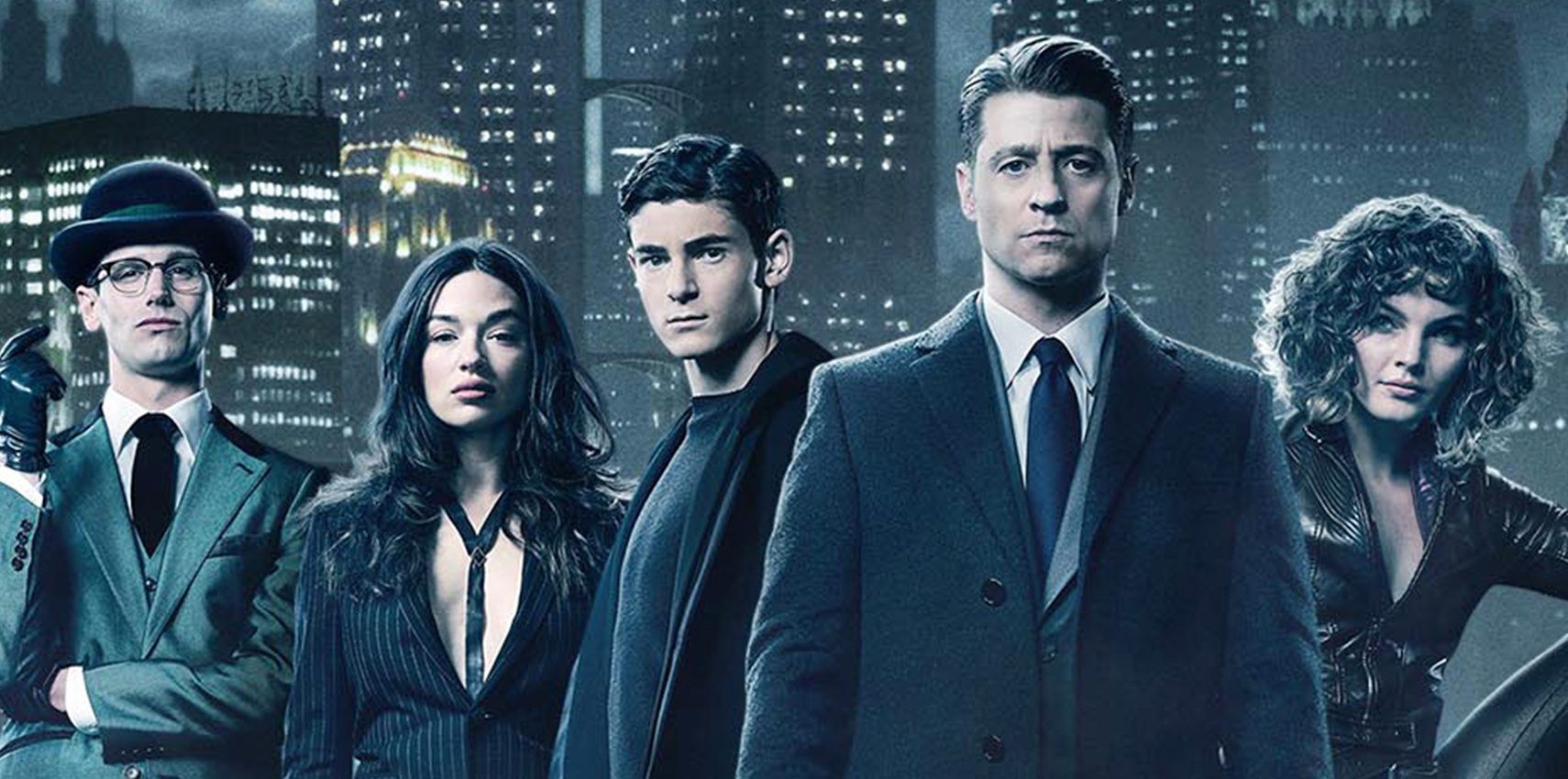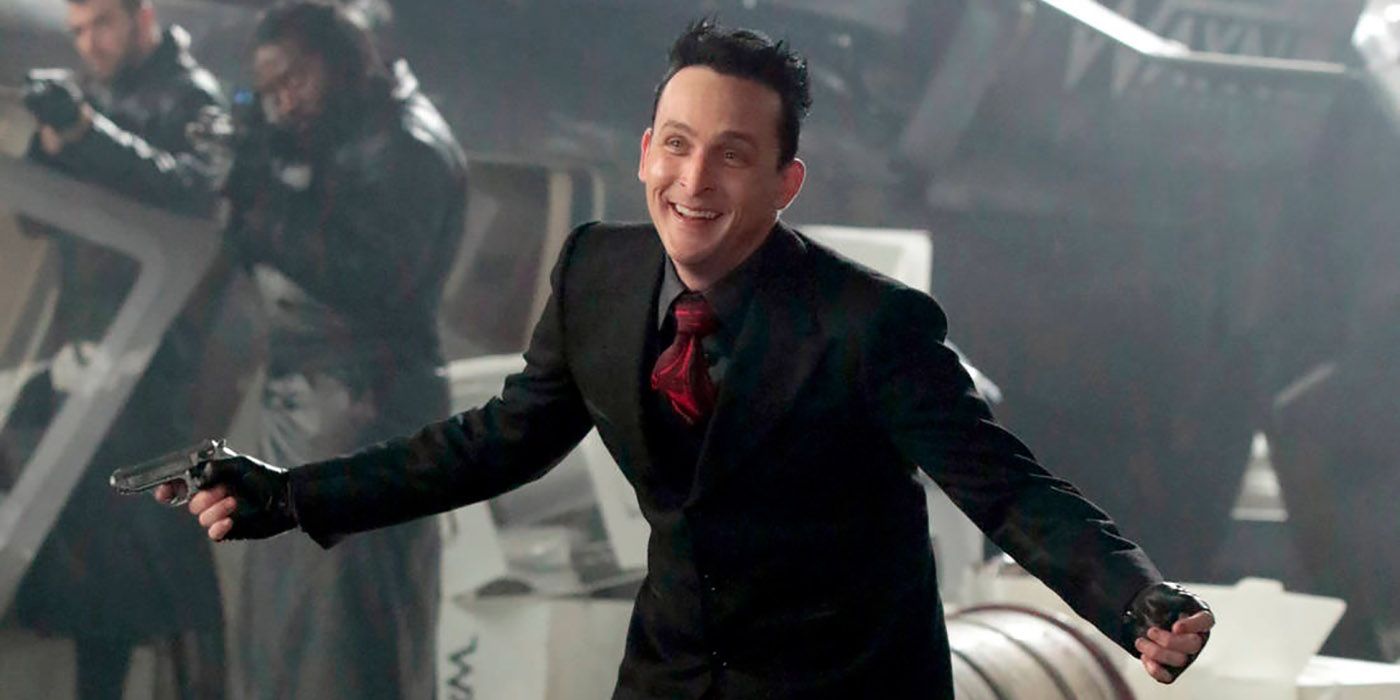Fox's Batman prequel Gotham has proven somewhat divisive among comic book fans. For some, it subverts expectations and rewrites the mythology of iconic characters, while for others it's a bizarre pop culture footnote that's never lived up to its promise. Regardless of how history will view Gotham, one thing is undeniable: It changed the way the Dark Knight's colorful rogues' gallery is framed in a narrative context. While some of these changes may not have worked terribly well, the majority of them have been unique, exciting and, at the very least, fascinating.
For decades, readers of Batman comics have held a certain viewpoint regarding the relationship between the Dark Knight and his eclectic roster of enemies. That is, without Batman, there's a good chance these villains wouldn't exist. That notion has become popular across all media, with overt examples of Batman making his own villains (either directly or indirectly) more recently ingrained in Christopher Nolan’s Dark Knight Trilogy. Jim Gordon warns Batman of escalation, saying that his war on crime will be met with stronger resistance, before handing him the telltale joker playing card.
RELATED: Gotham: Harley Quinn & Mutant Leader Fight Selina in New Promo
Now, one could argue that a villain acting as a response to Batman does not equate to being created by the Caped Crusader himself. This plays out more like the sales market. Supply and demand. That sort of thing. But it does beg the question: If Batman wasn’t running around Gotham in black leather, punching unsuspecting criminals in the face at two in the morning, would the opposition feel compelled to adopt similar tactics? This notion having any real merit is anchored by the Joker and his fascination with Batman. On more than one occasion, the Clown Prince of Crime has declared that the Dark Knight is just like him. The Joker and Batman are kindred hearts on opposite sides of a war neither of them truly understand. They are order and chaos.
During DC Comic’s New 52 initiative, writer Scott Snyder and artist Greg Capullo dissolved any ambiguity about Bruce Wayne’s involvement in creating the Joker with a confrontation between Batman and the Red Hood, which led to the latter being dropped in a vat of chemicals and… well, you know the rest. This idea, of course, extends to other characters. During the same period of time in the comics, Bruce Wayne fired Pamela Isley over some less-than-moral business practices, which helped lead to her development as the villain Poison Ivy. Again, no one necessarily forced Pam to become the plant-loving eco-terrorist, but to say Batman had no influence on her trajectory isn’t exactly fair.
What makes the television show Gotham so unique is that is doesn’t even put this idea up for debate. The villains take center stage in the series. We have watched characters like Oswald Cobblepot and Edward Nygma go from being a low-level crook and forensic technician, respectively, to the supervillains they were destined to be, and this all occurred without the presence of Batman. Well, Bruce Wayne is around, but he’s just a kid. And as characters don their iconic looks from the comics in Gotham’s final season, the notion of Batman being the response, as opposed to it being the other way around, is becoming more apparent.
RELATED: Gotham: Selina Kyle's Mystical Catwoman Transformation, Explained
Batman didn’t create these monsters. Gotham did. Well, Gotham and a whole lot of mistreatment from peers and undiagnosed mental illnesses. While there is a debate to be had regarding how the heir of a billion dollar empire may have had a hand in the city's sorry state on a social and economic level (which, let’s be honest: it totally does), the direct cause and effect that has been a point of discussion is pretty much out the window. In doing so, this allows for Batman to truly rise as a response to a much larger problem in his city: Criminals with a shtick.
In stories like Batman: Year One, Bruce puts on the cape and cowl to go against your typical gangsters and Mafioso goons, not guys with freeze guns and women in cat costumes. Because of this, there is a bit of a leap for readers to make. And it’s a leap that is often self-justified through the lens of reactionary criminals or direct causality. Gotham made the gangland universe seem very much run of the mill, but slowly changed it to a circus of colorful characters. Now all we need is the coup de grace to knock down the big top tent and send these cultivated villains scattering in fear of the man who would be their greatest rival.


